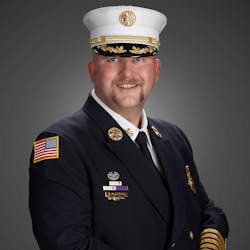Volunteer retention is one of many hot-button issues in the fire service today. Much as the terms “salvage” and “overhaul” are paired together, “retention” often is paired with “recruitment.” Salvage and overhaul are two separate fireground tasks that we lump together when we talk about them. I believe that we all can admit that most departments spend more fireground focus on overhaul and that we could step up our salvage game. The same can be said for recruitment and retention, respectively.
You seldom see or hear just one of those terms in discussion, yet many departments that attempt to address the issue focus most efforts on recruitment and neglect to focus on retention. Don’t get me wrong, recruitment is very important. Equally important—and a case can be made that it’s more important—is the retention of those who are in your department who you worked diligently to recruit and train.
It’s time for many of you to overhaul your thinking when it comes to member retention, so you can salvage your volunteer fire service from the decline that’s seen in many areas.
Learn from failure
Leadership is the driving force that’s behind both success and failure of an organization. However, a failure in one area doesn’t mean that the organization fails or even that the person who is in charge is a bad leader. That said, the most successful leaders learn from their failures and from the failures of others to lead the organization to success. Although leaders of and within organizations don’t perform every task, they set the tone and steer the ship.
For leaders to be successful in retaining quality members (notice that I didn’t indicate all members), they must be in touch with their team. I believe that the first step to achieving this is genuine care for your people.
Theodore Roosevelt said, “People don’t care how much you know until they know how much you care.” I find the 26th president’s statement to be true as both a leader and a follower.
I am a firm believer in leaders adopting a never-stop-learning attitude and constantly seeking professional development opportunities. Still, you can be the smartest person on the team and yet be ineffective as a leader because your followers don’t believe that you have their best interests and/or the interests of the team at heart. Effective leading starts with caring, which leads to followership.
Quality over quantity
Above, I mentioned retaining quality members. I place a very high emphasis on quality over quantity.
Many times, I see volunteer departments become overly concerned about how many members are on the roster as opposed to what those members bring to the table. Not everyone needs to be a firefighter. Not everyone is a good fit for a particular team. Sometimes, you must manage people off of the team to achieve team success, and this is difficult for many leaders to do in the volunteer world.
When the focus becomes filling roster slots, you not only run the risk of fielding a low-performing team, but you alienate the high-performers who are on the team by tolerating toxic people and behaviors and dragging this dead weight along.
University of Alabama Head Football Coach Nick Saban said, “Mediocre people don’t like high achievers, and high achievers don’t like mediocre people.” I couldn’t agree more. Your retention goals should focus on high achievers and those who have the potential and desire to become high achievers. Provide opportunities for personal and professional growth but understand the adage that you can lead a horse to water, but you can’t make it drink. You will have members who won’t buy in to the team vision and goals, regardless of the opportunities that you might provide. Understand that there will come a point when you must focus your time and energy elsewhere.
Team vision and mission
Another critical part of member retention is to create buy-in and ownership of the team vision and mission. Demonstrating that you care and weeding out mediocrity is only part of the process. You must get the square pegs in the square holes and the round pegs in the round holes. You must know the strengths and weaknesses of your people, so you can utilize them in the best manner. Not everyone is best suited for every job on the fireground and not everyone is best suited for every job in the firehouse.
It’s important to understand that, as the leader, you can’t do everything, and you shouldn’t try. Delegation and empowerment are critical to building a cohesive, high-performing team that members are proud to be a part of and don’t want to leave.
Self-scrutiny
In the business world, it often is said that people don’t quit jobs, they quit bosses. Although we know that this isn’t the only reason that people leave a fire department, we shouldn’t be surprised to find that it often is the most significant reason.
It’s a hard pill to swallow, but sometimes leaders must look in the mirror and recognize that they might be the problem or a contributor to the problem of retention. It’s a balancing act, as our own confirmation bias tells us that we’re doing what’s best for the team. It takes emotionally intelligent and mature leaders to recognize their own shortcomings and then take steps to correct them.
Embrace the privilege
Leadership sets the tone for the organization in all things but particularly when it comes to member retention. Quality members are far more important than quantity of members. Promote the growth of high achievers and those who have the potential to be high achievers. Weed out mediocrity and toxic individuals. Delegate tasks and empower members to create buy-in and ownership. Look inward to ensure that you aren’t becoming part of the problem.
It is a privilege to lead, and that privilege comes with much responsibility. Keep that responsibility at the forefront of your mind and never stop learning as you go.
Key Points for Delegation
- Delegate tasks and responsibilities throughout the team
- Provide clear guidance on the expectations and desired outcomes
- Don’t micromanage the process of achieving the result
- Be approachable and available to answer questions and to provide clarification
- Empower members to be creative/offer ideas and to drive change from the bottom up
- Be excited with results, team chemistry and improved morale

Brandon Fletcher
Brandon Fletcher is the chief of the Gilt Edge Fire Department in West Tennessee and a 23-year student of the fire service. He is a second-generation firefighter who has a background as both a volunteer and career firefighter in the rural, suburban and airport/industrial settings. Fletcher holds a Bachelor of Science from the University of Tennessee at Martin and is a graduate of the Texas A&M Fire Service Chief Executive Officer program. He is a designated Chief Fire Officer and Chief Training Officer through the Center for Public Safety Excellence. Fletcher is a member of the Institution of Fire Engineers and NFPA's Fire Service Occupational Safety and Fire Officer Professional Qualifications technical committees. He is a hazmat specialist and serves as an instructor for the hazmat program at the Center for Domestic Preparedness in Anniston, AL.






